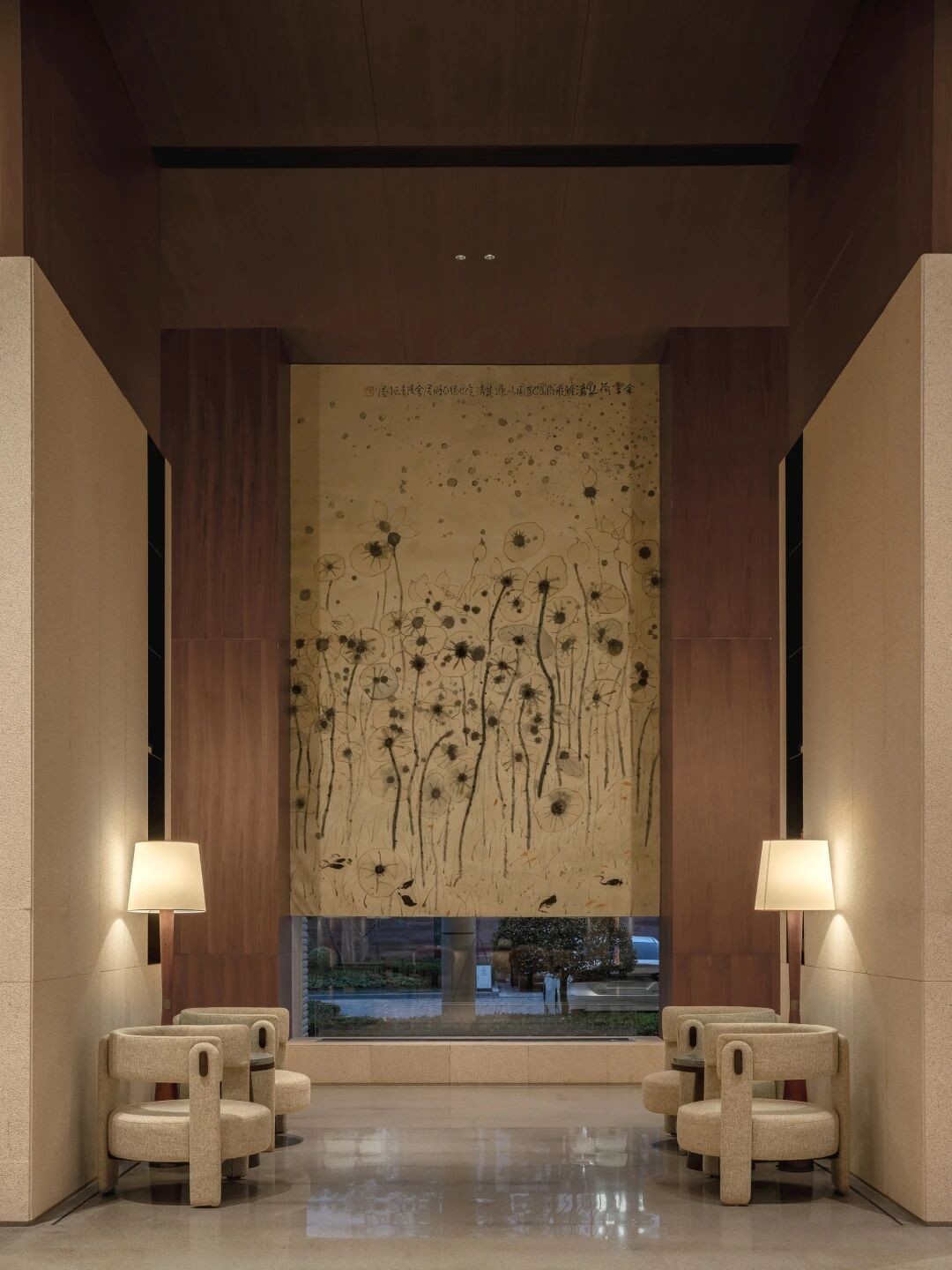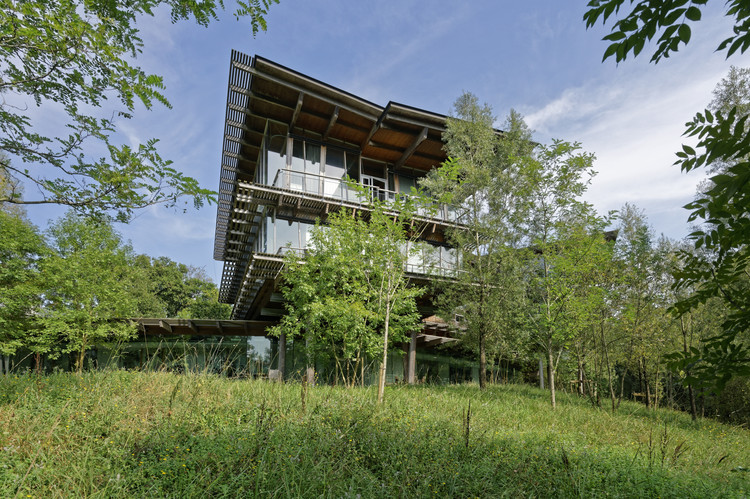Neufeld an der Leitha Kindergarten Solid Architecture
2011-08-31 00:00
架构师提供的文本描述。由坚实的建筑设计的新幼儿园在Neufeld和der Leitha作为一个竞赛中获胜的项目,寻求设计一个新的建筑容纳一个四组幼儿园。比赛的一项要求是,在不干扰幼儿园日常活动的情况下,增加两个小组是可能的。
Text description provided by the architects. The design by SOLID architecture for the new kindergarten in Neufeld an der Leitha emerged as the winning project in a competition that sought designs for a new building to house a four-group kindergarten. One of the competition's requirement was that it should be possible to add an extra two groups without disrupting day-to-day activities at the kindergarten.
将建筑体积放置在东西方向上,形成了明确的户外区域.朝北,大楼仍然关闭。车辆入口,停车场和入口在这边.因此,南部和西部的户外空间,专门为儿童保留,基本上不受交通的干扰。
Placing the building volume in an east-west direction created clearly defined outdoor areas. Towards the north the building remains closed. The vehicular approach, the car-parking area and the entrance are on this side. As a result the outdoor spaces in the south and west, which are reserved exclusively for the children, are largely undisturbed by traffic.
日光和建筑的相互作用是设计的一个基本要素。在内部,服务区和附属房间朝北。一个开放的交通中心区贯穿整个建筑。朝南,这群人的房间与建筑物分离,大面积的玻璃,允许最好地利用日光。在屋顶上形成的切口,以及分配给各小组的室外区域,在内部和外部形成了新的空间。在南北方向摇摇晃晃的单位建立了小组房间之间的视觉联系。属于群体的开放空间可以整合到教育活动中。他们是一个可管理的大小,打破了内部和不断变化的户外区域之间的界限。
The interplay of daylight and architecture is an essential element of the design. In the interior the service zones and ancillary rooms face north. An open communicative central area flows through the entire building. Towards the south the groups rooms detach themselves from the building with large areas of glazing that allow the best possible use of daylight. Incisions made in the roof together with the outdoor areas allotted to the groups form new spaces between inside and outside. Staggering the units in a north-south direction establishes visual connections between the group rooms. The open spaces ascribed to the groups can be integrated in educational activities. They are a manageable size and break down the boundaries between inside and the constantly changing outdoor area.
每一组房间连同其卫生设施和储存空间组成一个独立的单元。玻璃墙、屋顶灯光和花园与幼儿园联锁的方式创造了充满阳光的空间,明亮的灯光条件和不同的色彩气氛。
Together with its sanitary facilities and storage space each of the group rooms forms an independent unit. Glass walls, roof lights and the way the garden interlocks with the kindergarten create spaces flooded with daylight, lively lighting conditions and different moods of color.
集团客房在设计上是开放的。明确界定的游乐区,如建筑一角或洋娃娃角,被故意排除在外,以便让不同的游乐区和工作区域自由结合。在小组内相遇和从小组中撤退都是可能的。身体残疾儿童也可以进入所有地区。餐厅位于入口处附近,也可用作“家长咖啡馆”。
The group rooms are open in design. Clearly defined play areas, such as a building corner or dolls corner, were deliberately left out so as to allow the free combination of different play and work areas. Encounters in and withdrawal from the group are both possible. All areas are also accessible to children with physical disabilities. The dining room is positioned near the entrance and can also be used as a “parents’ café”.
屋顶灯在大屋顶延伸到整个建筑,为中心区和卫生设施提供照明。在南部,屋顶延伸到了一个用木石板制成的佩高拉(Pergola)。这有助于保护朝南的集体客房免受过热。连同下面的木甲板,珀戈拉定义了一个通往花园的遮蔽过渡区。
Roof lights in the large roof extending over the entire building provide light for the central zone and the sanitary facilities. In the south the roof extends into a pergola with wooden slats. This helps protect the south-facing group rooms against overheating. Together with the wooden deck below it the pergola defines a sheltered transitional zone to the garden.
建筑服务概念的重点是节约利用资源和保护环境。整个大楼都有一个有控制的通风系统。通过地下隧道引入的新鲜空气在冬季预热,夏季冷却。热水是通过水-水热泵产生的.雨水渗入校园里的蓄水池里。
The building services concept focuses on an economic use of resources and protection of the environment. The entire building has a controlled ventilation system. The fresh air introduced via a subterranean tunnel is pre-warmed in winter and cooled in summer. Hot water is produced by means of a water-water heat pump. Rainwater seeps off into cisterns in the school grounds.
 举报
举报
别默默的看了,快登录帮我评论一下吧!:)
注册
登录
更多评论
相关文章
-

描边风设计中,最容易犯的8种问题分析
2018年走过了四分之一,LOGO设计趋势也清晰了LOGO设计
-

描边风设计中,最容易犯的8种问题分析
2018年走过了四分之一,LOGO设计趋势也清晰了LOGO设计
-

描边风设计中,最容易犯的8种问题分析
2018年走过了四分之一,LOGO设计趋势也清晰了LOGO设计
























































































.jpg)







